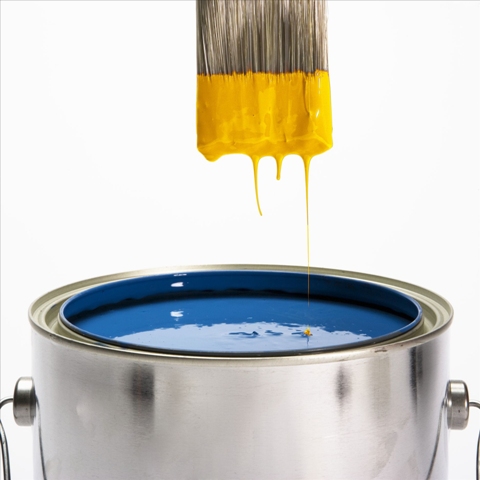The international coating industry is reaching a saturation point; however, China is one of the few countries that has maintained a growing total production in the coating industry. In 2009, the total production for the wall painting industry in China has overtook America’s figure, becoming the largest producer in the world. Since 2013, Chinese total paint production has accounted for more than one-third of the world’s total production. Among Chinese major paint varieties, architectural coatings occupy most of the market share. In 2007, 35.6% of the total was for wall painting. The number increased to 48% in 2012. In recent years, with the increasing global environmental awareness, the Chinese government has been calling for a more environmentally-friendly development of local industries. Thus, the wall painting industry in China is facing a coming revolution that requires strong technological innovation and environmental safety.
The Coatings Industry in China
On May 12th, 2015 Itujie (www.itujie.com.cn) released the “Top 50 Manufacturers of Paints and Coatings in China”. Here are some of the important highlights:
- The total revenue of coatings industry in 2015 was 386.759 billion Yuan,11.9% increase over 2013.
- The top 50 companies contributed 27.93% of the total market revenue.
- The sales revenue of the top 2 companies, Nippon Paint (a Japanese Company), brand and AkzoNobel (a Dutch Company) managed to exceed 10 billion yuan each.
- None of the top 5 manufacturers are Chinese national enterprises and the 7th first companies are a foreign company.
| Rank | Manufacturer | ChinaHeadquarter Location | Sales(Million yuan) |
| 1 | Nippon(China) | Shanghai | 134852 |
| 2 | Akzonobel(China) | Shanghai | 112943 |
| 3 | PPG(Shanghai) | Shanghai | 95724 |
| 4 | Basf(Shanghai) | Shanghai | 33865 |
| 5 | Valspar(Shanghai) | Shanghai | 32646 |
| 6 | Carpoly | GuangdongJiangmen | 31707 |
| 7 | Jotun (China) | Shanghai | 30268 |
| 8 | Axalta(Shanghai) | Shanghai | 29369 |
| 9 | XiangJiangPaint | HunanChangsha | 268710 |
| 10 | ShanghaiHuayi | Shanghai | 2592 |
Although China has numerous paint and pigment manufacturers, most of the production feature low quality and could harm the environment, while higher performance, functionality, and environmentally safe products are relatively rare. These are the reasons that lead foreign enterprises with higher technical support to occupy the majority of the market.
May 12th, 2015: Top 50 Manufacturers of Paints and Coatings in China
The Wall Painting Industry in China entering a Green Field
 With the booming real estate industry in China, the demands for wall painting services have been expanding rapidly, especially in a metropolis such as Shanghai, Beijing, Shenzhen, etc. Nowadays, people in China are more aware and concerned about the environmental protection and are trying to pursue a higher quality of living. Wall painting is the ubiquitous interior decorations which inevitably draw concern of health and safety. The average VOC (Volatile organic compounds) of China’s paint products in 2013 was about 42% (~550 g/l), wherein industrially developed countries’ this amount was below 420g/l. In 2014, the Chinese government implemented a new tax policy on the coatings industry: Any company that produces coatings containing over420 g/l of VOC will be levied a 4% tax. To limit harmful substances of interior architectural coatings, Chinese wall painting industry has to contribute to the Research & Development of new technologies and diversify the paints into a sustainable field.
With the booming real estate industry in China, the demands for wall painting services have been expanding rapidly, especially in a metropolis such as Shanghai, Beijing, Shenzhen, etc. Nowadays, people in China are more aware and concerned about the environmental protection and are trying to pursue a higher quality of living. Wall painting is the ubiquitous interior decorations which inevitably draw concern of health and safety. The average VOC (Volatile organic compounds) of China’s paint products in 2013 was about 42% (~550 g/l), wherein industrially developed countries’ this amount was below 420g/l. In 2014, the Chinese government implemented a new tax policy on the coatings industry: Any company that produces coatings containing over420 g/l of VOC will be levied a 4% tax. To limit harmful substances of interior architectural coatings, Chinese wall painting industry has to contribute to the Research & Development of new technologies and diversify the paints into a sustainable field.
Because of its non-toxic nature, water-based coatings have a great advantage over other traditional solvent-based coatings in wall painting industry. In 2012, among the total architectural coatings (48% of the total coating market), two-thirds were water-based. The market share of water-based coatings is enjoying a healthy growth, in the meantime, the development of powder coatings, electrophoretic coatings,radiation-cured coatings and any other solvent-free coatings have bright prospects in the near future. Up till now, the environment-friendly coatings in China only accounts for around 26% of the total market share while in developed countries the number is a significant 80%. As the Chinese government has been actively implementing and enforcing new environment policies, there are great revenue opportunities for environment-friendly paints.
Cleaner production and low-carbon emission are the carefully planned path for sustainable development of China’s paint industry. China’s paint industry must transform from a quantitative industry to a qualitative industry.
Profit model: From Selling Products to Selling Services
Nippon and Dulux (a sub-brand of AkzoNobel) are the two largest brands of architectural coatings in China. They have been in competition for a long time. During Taobao’s“eleven eleven”( an online shopping event on the particular day of Nov.11th) in 2014, Dulux’s sales revenue reached 10.64 million, ranking first in the coatings industry. Nippon ranked second with 3.55 million sales. Back in 2013, Nippon exceeded Dulux, ranking the first. How did Dulux reverse the tide? The answer is for its outstanding services. The implementation of custom services and effective after-sales services won Dulux a decisive battle over Nippon though Nippon enjoys a higher reputation in China. Both exclusive services and comprehensive services can bring the company more potential customers as well as gaining customer loyalty.
A new innovation carried out by Chinese research team will soon bring people a chameleon-like house paint that changes color. The principal behind is “the nano-sized cells within that can be controlled to inflate or deflate to deflect visible light at different wavelengths, thus generating different colors”.To change the wall color, people will only need to spray water or change the room temperature or just even by passing a weak electric current through it. If this technology is launched, it will save consumers the torturous process of choosing a paint color. This is a sign of innovation and humanization. If the trend prevails, service-oriented products will definitely win the heart of the Chinese consumers.
You enjoy reading this article and would like to know more about China’s market, contact us at dx@daxueconsulting.com
See also our Services:




